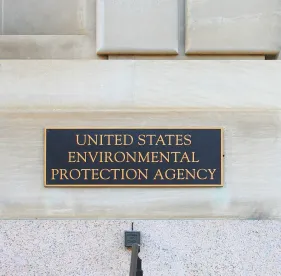The US Environmental Protection Agency (EPA) has been very diligent about meeting some of its key obligations under section 6(b) of the Toxic Substances Control Act (TSCA), 15 U.S.C. 2605(b), with its recent announcements on low priority and high priority substances. First, on August 15, 2019, EPA issued a proposed rulemaking that lists 20 chemical substances that the agency intends to designate as low-priority substances for which risk evaluation under TSCA is not warranted. Then on August 23, 2019, the agency proposed to designate 20 chemical substances as high-priority substances for risk evaluation. Both proposals allow for a 90-day comment period which closes on November 13, 2019 and November 21, 2019 respectively.
With regard to low-priority chemicals, the August 15 Federal Register notice is a follow up to the 20 substances that EPA preliminarily proposed in March. The designated substances are mostly industrial solvents and cleaners and are listed below:
|
Low Priority Candidates |
||
|
Chemical Name |
CASRN |
|
|
1 |
1-Butanol, 3-methoxy-, 1-acetate |
4435-53-4 |
|
2 |
D-gluco-Heptonic acid, sodium salt (1:1), (2.xi.)- |
31138-65-5 |
|
3 |
D-Gluconic acid |
526-95-4 |
|
4 |
D-Gluconic acid, calcium salt (2:1) |
299-28-5 |
|
5 |
D-Gluconic acid, .delta.-lactone |
90-80-2 |
|
6 |
D-Gluconic acid, potassium salt (1:1) |
299-27-4 |
|
7 |
D-Gluconic acid, sodium salt (1:1) |
527-07-1 |
|
8 |
Decanedioic acid, 1,10-dibutyl ester |
109-43-3 |
|
9 |
1-Docosanol |
661-19-8 |
|
10 |
1-Eicosanol |
629-96-9 |
|
11 |
1,2-Hexanediol |
6920-22-5 |
|
12 |
1-Octadecanol |
112-92-5 |
|
13 |
Propanol, [2-(2-butoxymethylethoxy)methylethoxy]- |
55934-93-5 |
|
14 |
Propanedioic acid, 1,3-diethyl ester |
105-53-3 |
|
15 |
Propanedioic acid, 1,3-dimethyl ester |
108-59-8 |
|
16 |
Propanol, 1(or 2)-(2-methoxymethylethoxy)-, acetate |
88917-22-0 |
|
17 |
Propanol, [(1-methyl-1,2-ethanediyl)bis(oxy)]bis- |
24800-44-0 |
|
18 |
2-Propanol, 1,1'-oxybis- |
110-98-5 |
|
19 |
Propanol, oxybis- |
25265-71-8 |
|
20 |
Tetracosane, 2,6,10,15,19,23-hexamethyl- |
111-01-3 |
Chemical substances placed on the low-priority list have been selected from EPA’s Safer Chemicals Ingredients List, which includes chemicals that have been evaluated and determined to meet EPA's safer choice criteria. Generally, having a chemical substance placed on the low-priority risk evaluation list means that a risk evaluation is not warranted at this time. This month, EPA also published its Approach Document for Screening Hazard Information for Low-Priority Substances under TSCA, which described the literature review process for identifying and collecting the information used in the screening review for each proposed low-priority chemical substance. Comments on both the proposed low-priority designations and EPA’s Approach Document are due November 13, 2019.
During the 90 day comment period, stakeholders can weigh in on whether EPA has met the statutory obligation to have information “sufficient to establish” that the substances do not meet the standard for high-priority substances. A high-priority substance may present an unreasonable risk to human health or the environment. To date, comments were filed on only eight of the 20 substances initially identified as low priority, and no comments have been adverse to the proposed low priority designations.
The implementing regulations found at 40 CFR §§ 702.7 and 702.9 also require that the agency carry out a prioritization process for high priority chemical substances by a certain date. In fulfillment of that requirement, the agency is proposing the same 20 chemical substances it initiated during the prioritization process on March 21, 2019. The list of chemical substances includes:
|
High-Priority Candidates |
||
|
Chemical Name |
CASRN |
|
|
1 |
1,3-Butadiene |
106-99-0 |
|
2 |
Butyl benzyl phthalate (BBP) (1,2-Benzenedicarboxylic acid, 1-butyl 2-(phenylmethyl) ester) |
85-68-7 |
|
3 |
Dibutyl phthalate (DBP) (1,2-Benzenedicarboxylic acid, 1,2-dibutyl ester) |
84-74-2 |
|
4 |
o-Dichlorobenzene (Benzene, 1,2-dichloro-) |
95-50-1 |
|
5 |
p-Dichlorobenzene (Benzene, 1,4-dichloro-) |
106-46-7 |
|
6 |
1,1-Dichloroethane |
75-34-3 |
|
7 |
1,2-Dichloroethane |
107-06-2 |
|
8 |
trans-1,2-Dichloroethylene (Ethene, 1,2-dichloro-, (1E)-) |
156-60-5 |
|
9 |
1,2-Dichloropropane |
78-87-5 |
|
10 |
Dicyclohexyl phthalate (1,2-Benzenedicarboxylic acid, 1,2-dicyclohexyl ester) |
84-61-7 |
|
11 |
Di-ethylhexyl phthalate (DEHP) (1,2-Benzenedicarboxylic acid, 1,2-bis(2-ethylhexyl) ester) |
117-81-7 |
|
12 |
Di-isobutyl phthalate (DIBP) (1,2-Benzenedicarboxylic acid, 1,2-bis(2-methylpropyl) ester) |
84-69-5 |
|
13 |
Ethylene dibromide (Ethane, 1,2-dibromo-) |
106-93-4 |
|
14 |
Formaldehyde |
50-00-0 |
|
15 |
1,3,4,6,7,8-Hexahydro-4,6,6,7,8,8-hexamethylcyclopenta [g]-2-benzopyran (HHCB) |
1222-05-5 |
|
16 |
4,4'-(1-Methylethylidene)bis[2, 6-dibromophenol] (TBBPA) |
79-94-7 |
|
17 |
Phosphoric acid, triphenyl ester (TPP) |
115-86-6 |
|
18 |
Phthalic anhydride (1,3-Isobenzofurandione) |
85-44-9 |
|
19 |
1,1,2-Trichloroethane |
79-00-5 |
|
20 |
Tris(2-chloroethyl) phosphate (TCEP) (Ethanol, 2-chloro-, 1,1',1”-phosphate) |
115-96-8 |
High priority substances may present an unreasonable risk of injury to health or the environment because of a potential hazard and a route of exposure under conditions of use, including an unreasonable risk to vulnerable subpopulations. Such a designation is not a conclusionary finding and EPA will make the determination without consideration of costs or other non-risk factors, as required by TSCA section 6(b)(1)(B). Final designation of a high-priority substance initiates the risk evaluation process that culminates in a finding of whether or not the chemical substance presents an unreasonable risk of injury to health or the environment under the conditions of use.
In addition to the recommended designations for each of the low and high chemical substances, both proposed rules outline the agency’s summary of the approach used to support the intended designations, the proposed designation for each of the chemical substances, and instructions on how to access the chemical-specific information, analysis and basis used by EPA to make the proposed designation for each chemical substance.




 />i
/>i
